Last updated on June 8, 2023
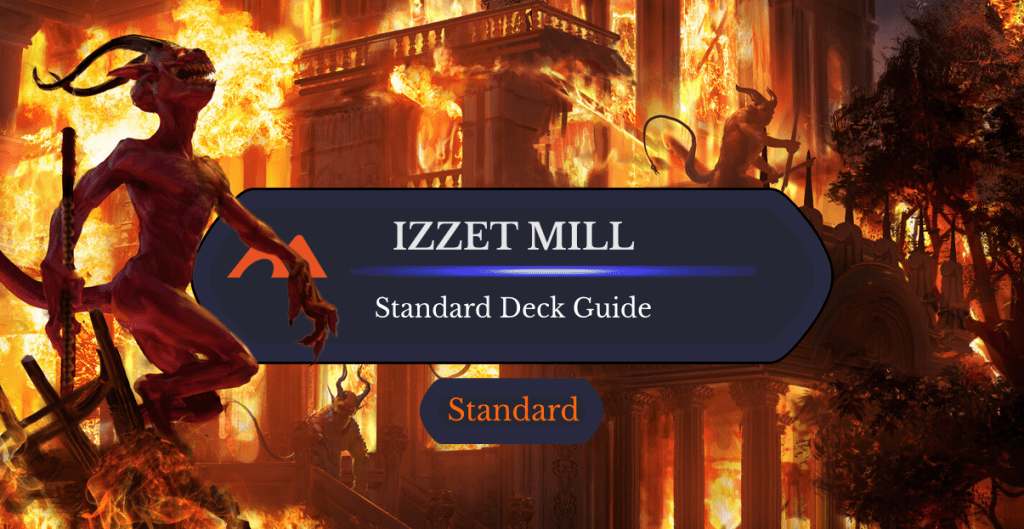
Burn Down the House | Illustration by Campbell White
Standard is a format that's dominated by mostly Runes and midrange decks. There are other aggressive strategies, like mono-green or mono-white, that can go on a winning streak and get some good results with good enough luck. But that's usually not the case as shown in the latest set Championship.
Another strategy that's been kind of buried is control. There aren't really that many good cheap spells in blue that can outvalue cards like The Wedding Announcement or Esika's Chariot. But there's a new deck in town that can beat both midrange and aggressive strategies with ease.
Interested in milling your opponents with Izzet mill? Look no further!
The Deck
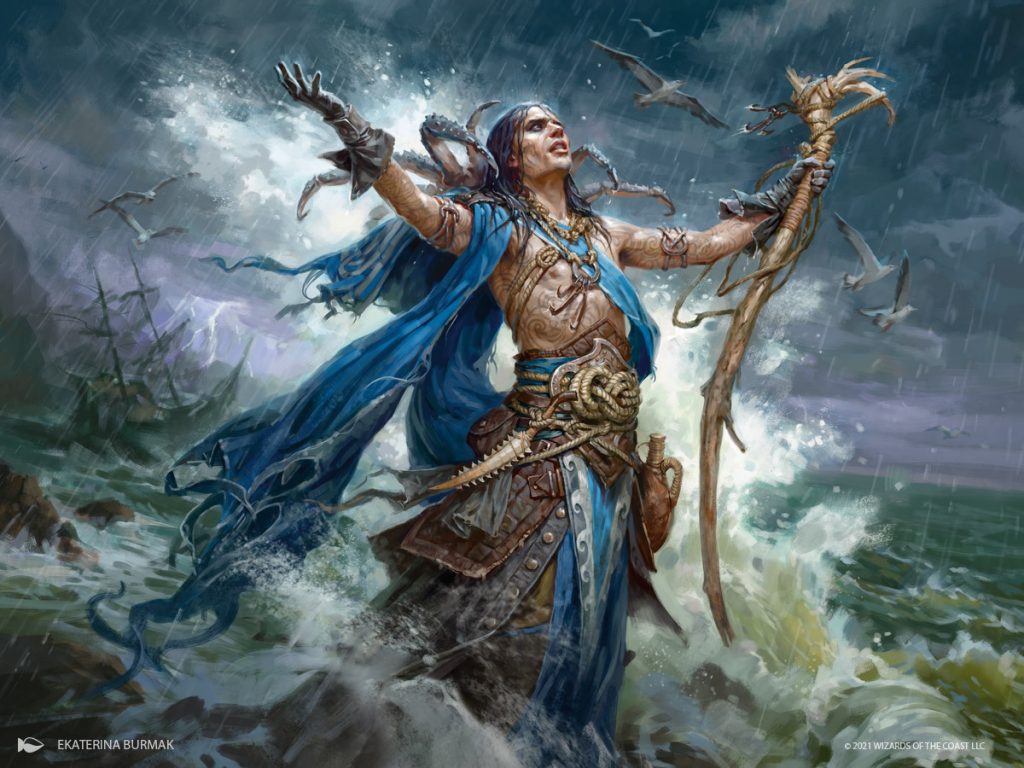
Lier, Disciple of the Drowned | Illustration by Ekaterina Burmak
Instant (40)
Fading Hope x3
Flame-Blessed Bolt x2
Spikefield Hazard x2
Abrade x2
Expressive Iteration x4
Galvanic Iteration x4
Jwari Disruption x4
Silundi Vision x2
Tasha's Hideous Laughter x3
Big Score x4
Unexpected Windfall x4
Burn Down the House x4
Invoke Calamity x2
Artifact (1)
Land (19)
Island x2
Mountain x7
Otawara, Soaring City
Riverglide Pathway x4
Sokenzan, Crucible of Defiance
Stormcarved Coast x4
Sideboard (15)
Fading Hope
Flame-Blessed Bolt
Disdainful Stroke x3
Smoldering Egg x4
Test of Talents
Fable of the Mirror-Breaker x2
Lier, Disciple of the Drowned
Hullbreaker Horror x2
The Strategy
In the words of its creator, Tobia Nappi: “this is not your regular hardcore Izzet mill deck with multiple cards to deplete your opponent's library.” It's a blue-red control deck with Tasha's Hideous Laughter as one of its win conditions.
Let's break down its core to expand a bit more.
Removal
This list contains a lot of spot removal to handle early threats in the initial phases of the game, and each one answers the meta differently.

Flame-Blessed Bolt is great at dealing with small creatures but excels at getting rid of Tenacious Underdog.
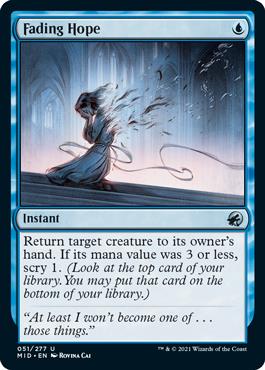
Fading Hope answers more significant threats, like giant creatures with multiple runes on it. It also helps in the late game to save your Lier, Disciple of the Drowned once it comes from the sideboard.

Next you have Abrade. It deals with slightly bigger creatures, or creatures that have grown a bit out of Flame-Blessed Bolt‘s range, like 3/3 Luminarch Aspirant or Esika's Chariot to some extent (as the cats will remain in play).

But the best removal you have access to is Burn Down the House. This deck needed a reliable board wipe that could answer both creatures and planeswalkers, and this card does both. It can also be used as a finisher by pairing it with some other value spells.
Card Advantage
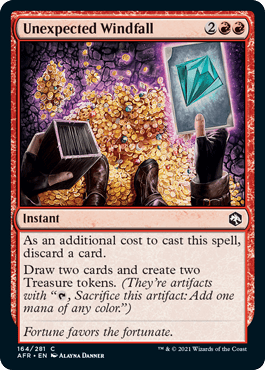

As far as card advantage goes, this deck runs eight cards that do the same thing in the form of Unexpected Windfall and Big Score. These aren't used only to filter your library, but the Treasure tokens that you make out of them are essential to chain multiple spells in a single turn later in the game.

Expressive Iteration is, without a doubt, one of the best cards ever created. You usually play it on turn 3 to play a land, but you're basically looking at three cards and keeping the best two in the late game. This is huge for just two mana.
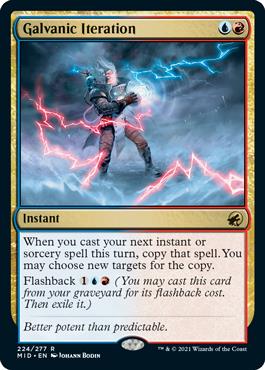
The glue for the above to be even better is Galvanic Iteration. It can copy the effects of cards on the stack, meaning that you don't have to discard a card if you copy Big Score or Unexpected Windfall. Instead you get the raw benefit of drawing two cards and creating two Treasure tokens for just two mana.

That sounds good, right? What if I told you that you could do it all over again from the graveyard without needing Lier, Disciple of the Drowned to be in play? This is thanks to Invoke Calamity. You can combine spells whose total mana value equals six from either your hand or your graveyard at instant speed. That last part is very significant, and it's worth paying to cast this card since you can theoretically start throwing board wipes at instant speed.
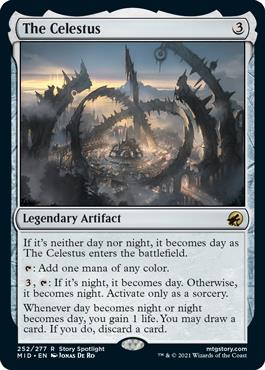
Last but not least, you have The Celestus as a way to stabilize thanks to its passive lifegain when conditions are met. But it also serves as card filtering in later portions of the game.
Win Condition


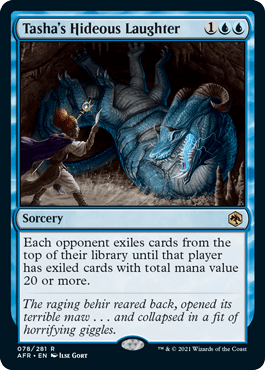
This deck can easily win by just chaining multiple Galvanic Iterations into Burn Down the House. Still, the natural way that this deck wants to win is to cast multiple copies of Tasha's Hideous Laughter in one turn.
The key for this to work is that you need to set up one big turn so your opponent's can't play around it. All the other card advantage cards I just mentioned have their role.
Think about it. If you go for the first turns of just taking hits, removing your opponent's best creatures, filtering your hand while creating Treasures, then all of a sudden on turn 6 you feel like you can't lose anymore. The advantage that you get from turn 1 until then is very hard to come back from, not even to mention that your win condition is unpredictable and hard to answer.
The Mana Base
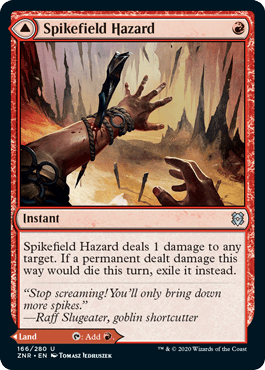

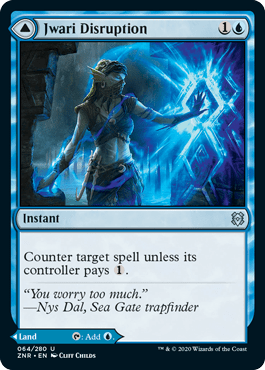
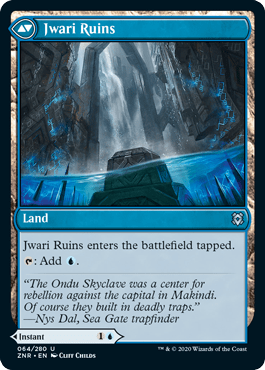
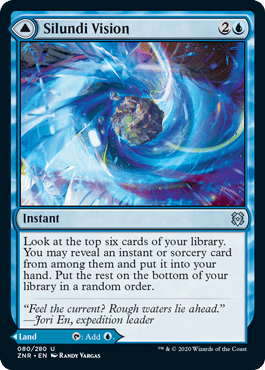
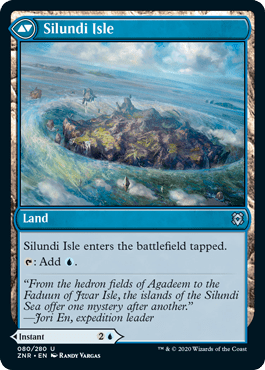
This deck runs only 19 lands plus eight double face cards in the form of Spikefield Hazard, Jwari Disruption, and Silundi Vision.
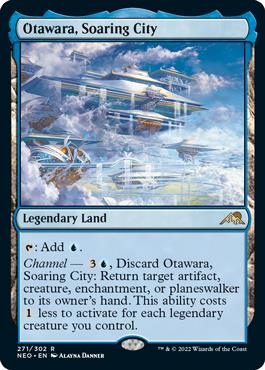
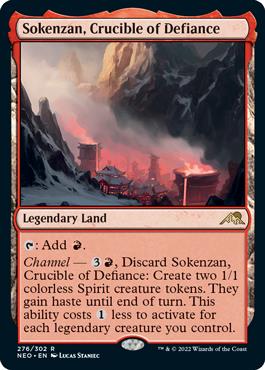
Then you also have a single copy of both utility lands in the deck's colors from Neon Dynasty: Otawara, Soaring City and Sokenzan, Crucible of Defiance.
The count of lands that you can use in the late game and prevent yourself from flooding goes up to 10 with these. Having 47 spells in your deck and never getting mana-screwed is a huge advantage that not a lot of decks can support.
Common Interactions
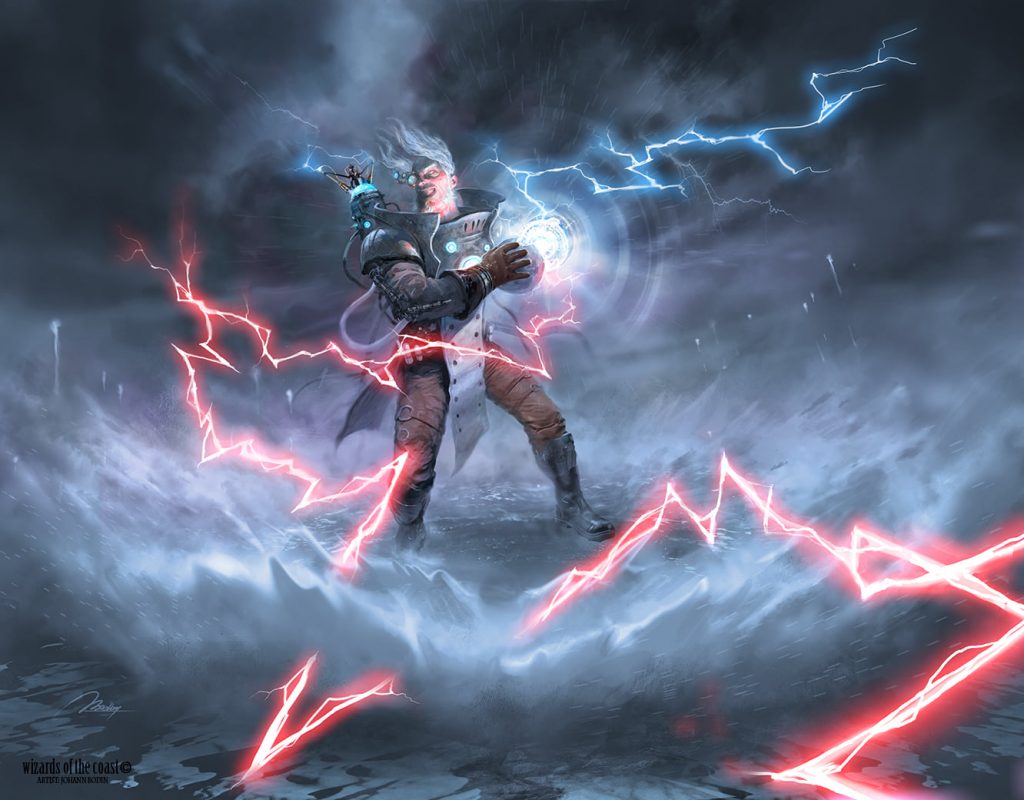
Galvanic Iteration | Illustration by Johann Bodin
This deck is very skill-intensive, and you need to know most of its typical interactions to get the most of it. Lucky for you, I'm here to guide you on what those are!
- Galvanic Iteration plus Unexpected Windfall/Big Score will be your bread and butter. You need six mana and it gives you three more cards and four Treasure tokens.
- Develop your “regular” lands first. You'll be using your MDFCs as spells more often than not, typically Jwari Disruption.
- You need to survive with your interaction spells from turn 1 until turn 3. After that it's okay to let some of the creatures resolve if you know you can deal with them later using Burn Down the House.
- From turn 4 on, it's a combination of playing one of the Windfall effects, Galvanic Iteration, and other card advantage spells until you find two Tasha's Hideous Laughters and a Galvanic Iteration, or vice versa. You'll win your games as long as you can resolve more than two Tasha's, regular or copied.
- You can do quick math between what cards are left from their deck and their mana values if you know your opponent's decklist. But it's crucial that you try to extend the game as long as you can until you can fire multiple Tasha's in a row when you're in a ladder environment.
- If your opponent has no board, you know their deck is low on interaction, and you don't want to mill them or have found your mill spells and have multiple Iterations on hand, it's okay to go for the alternative plan of creating numerous Devils with Burn Down the House.
- Post-sideboard you usually switch gears on games 2 and 3 by siding out all your mill and adding cards like Smoldering Egg and Fable of the Mirror-Breaker to attack games from a different angle. The key here is to keep your opponents guessing, and since game 1 is usually “free,” they won't see it coming in game 2.
Sideboard Guide
The sideboard can be a bit tricky since sometimes you want to side in a lot of cards, while other times you just want to bring one or two based on what you see from your opponent's decks. So I'll cover the most common matches you're likely to face here.
Esper and Jund Midrange Matchups
Midrange matches are mostly your best ones since they're not aggressive enough to pressure your life, but also don't have a way to disrupt your plans in the first game.
Post-sideboard, Jund recurs to discard spells and Esper to counterspells. Still, an unprepared player will side out most of their removal, and that's where Smoldering Egg and Fable of the Mirror-Breaker come into play to provide extra value and eventually take over the game.
Hullbreacher Horror is another card that's hard to compete once resolved, and it's usually game over if you get to untap with it. You'll side out our “mill” package to go wider than your opponent and eventually win the game without needing your primary win condition.
In
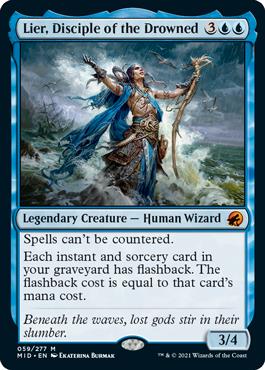

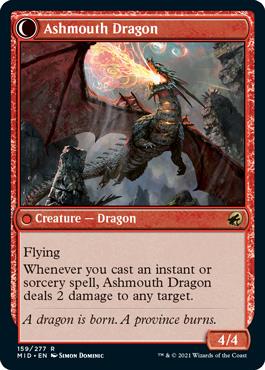



- 1 Lier, Disciple of the Drowned
- 4 Smoldering Egg / Ashmouth Dragon
- 2 Hullbreaker Horror
- 2 Fable of the Mirror-Breaker / Reflection of Kiki-Jiki (OP)
Out
- 3 Tasha's Hideous Laughter
- 1 Invoke Calamity
- 1 Burn Down the House
- 1 Galvanic Iteration
- 1 The Celestus (OP)
- 1 Removal (OP, depends on what's worse vs. your opponent)
Runes and Aggro Matchups
Unlike midrange decks, aggro can go over the top with relative ease if you don't draw the right answers in time. To avoid this you need to keep your opponent guessing what you have in hand by not tapping out.
You can bluff either a counter or a removal spell, and this is where Jwari Disruption comes in handy. You can just pretend you have it and that will make good players play around it, and may lead them not to develop their board in time. On the other hand, if you do have it, it always feels great when your opponents run into it.
Post-sideboard you bring in more removal and interaction and side out some copies of your other card draw effect. You want to have more answers in your hand rather than looking for them.
In



Out
Control and Mirror Matchups
Control matches, especially mirrors, are tricky because you run a lot of dead cards in game 1. It becomes a race of who can assemble their combo first. There's little to no interaction from both sides to disrupt each other.
Post-sideboard you side in basically everything except Flame-Blessed Bolt. You also trim some copies of your other spells and keep some removal.
In








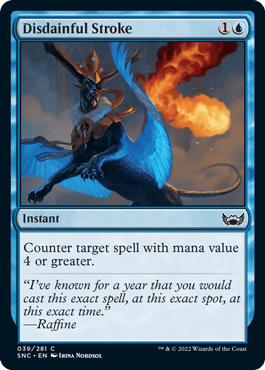
- 1 Fading Hope
- 4 Smoldering Egg / Ashmouth Dragon
- 2 Fable of the Mirror-Breaker / Reflection of Kiki-Jiki
- 1 Lier, Disciple of the Drowned
- 2 Hullbreaker Horror
- 1 Test of Talents
- 3 Disdainful Stroke
Out
- 2 Flame-Blessed Bolt
- 3 Tasha's Hideous Laughter
- 2 Abrade
- 3 Burn Down the House
- 1 Unexpected Windfall
- 1 Galvanic Iteration
- 2 Invoke Calamity
Other Cards to Try
There are plenty of other cards that this deck supports based on your preference and meta call. But here are the ones that stand the most.
Behold the Multiverse
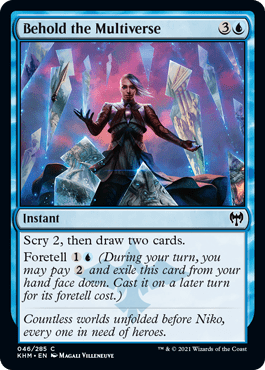
It's often essential to outvalue your opponent in terms of card advantage when you're up against control decks, and Behold the Multiverse is a good replacement for a couple of your Windfall effects post-sideboard.
Memory Deluge
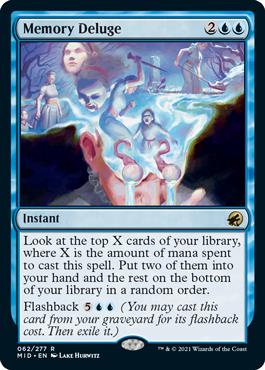
Memory Deluge follows the same logic as Behold the Multiverse, with the upside that it has the potential to let you see more cards in the long run even if it's a bit more expensive.
Strangle
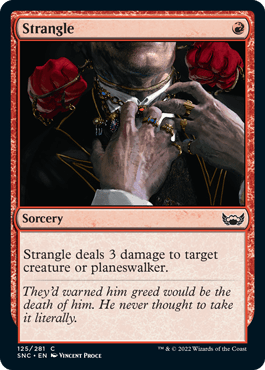
Strangle is a fine choice that can also hit planeswalkers if you're looking for a different cheap removal spell with more reach than Flame-Blessed Bolt.
Negate
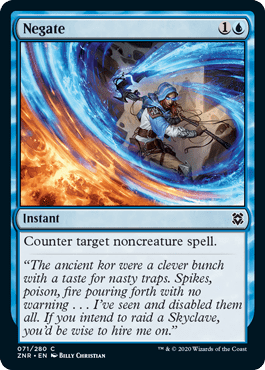
Counterspells are huge in mirror matches. Negate can be used as another addition or replacement based on the meta even though Test of Talents can sometimes be better. It might even be better than at least one copy of Disdainful Stroke in an open field.
Torch Breath

Torch Breath is good against creatures that have ward like Raffine, Scheming Seer since you won't have to pay the tax to kill them. Plus it's cheaper against blue creatures, which makes it even easier to cast.
Hall of Storm Giants
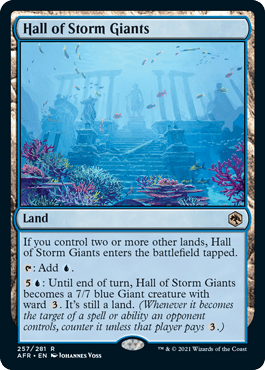
Hall of Storm Giants is an excellent card. You should have at least one copy in your main if you expect more than a couple players running control decks.
Prismari Command
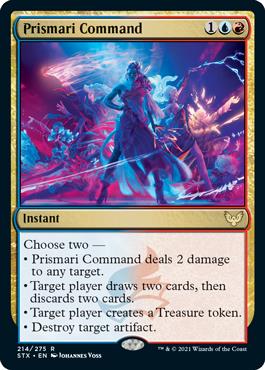
Prismari Command is a decent answer against Esika's Chariot since it deals with it almost entirely. The problem is that Burn Down the House is better at doing so, but you can argue that Command is cheaper, and you can do it at instant speed.
Wrap Up
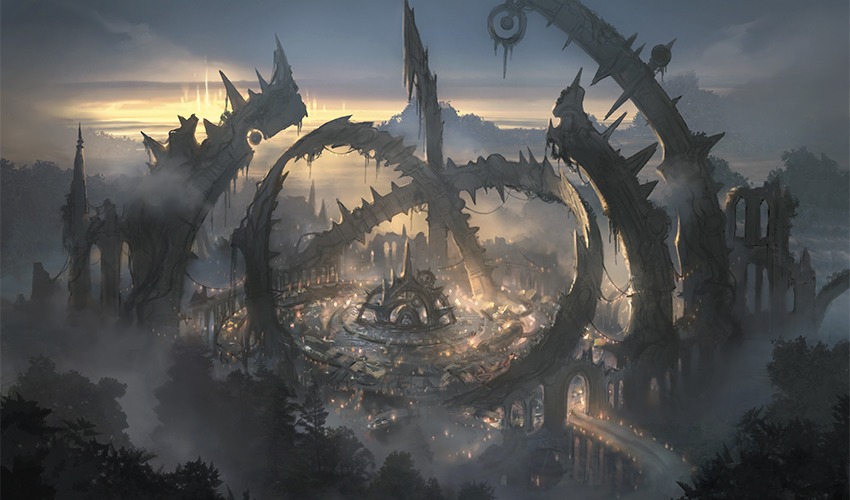
The Celestus | Illustration by Jonas De Ro
This has been an entertaining deck to play. It involves a lot of thinking and play to get used to it.
I can't thank my friend and former teammate Tobia Nappi enough for his insight on the deck and the sideboard. He did great in the latest Championship with an impressive 5-2 run during both days in Standard.
I hope you find this list to be as much fun as I did if you test it. Please let me know in the comments how it performed for you and which changes you'd make to improve it. And don't forget to download Arena Tutor for your games. It can track your stats, offer helpful advice, and help you improve your game.
That's it from me for now. Stay safe, stay healthy, and wash your hands!
Follow Draftsim for awesome articles and set updates:
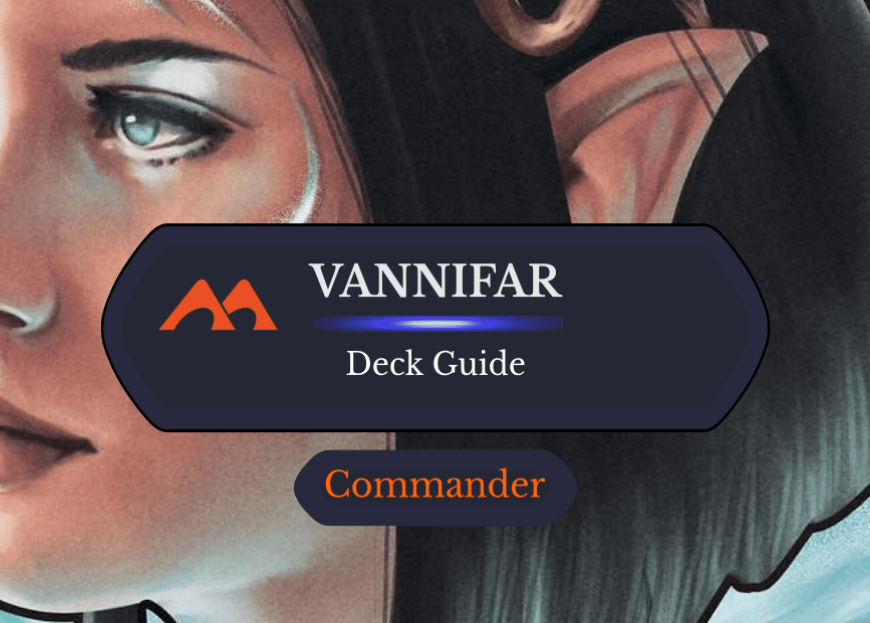
4 Comments
Hi! I’m having TONS of fun with the Super Friends deck. Thanks a lot!
One question: I feel like sometimes witching well is kind of a dead weight. Maybe I’m not understanding its value on the bigger picture, what would you say is its main use and place in the game? Also, if I decided to take it out, what other cards would you recommend as alternative?
Thanks and keep up the good work!
Hi Nicolas,
It’s definitely the most contentious spot, I like it as it gives us slighting more turn 1 plays, without being a dead card later on due to the sacrifice. Honestly if you’ve got the brazen borrowers i’d run those if you’re not feeling the witching wells. Glad to hear you’re enjoying the deck!
😀
Teferis tutelage!!!
In the Deck Budget BO1 Mono Blue Mill, I’ve trade the 2 Overwhelmed Apprentice and 2 Islands to 4 Frantic Inventory. That improved the drawability of the Deck. And i used one Jwari Disruption. So the Deck is with 61 cards and works well. I’ve thought using Winged Words as we have 6 flying creatures in this deck. Nevertheless I think any strategy to draw more cards would be an improvement to this Deck. If anyone has some ideas, I would like to hear you Guys!
Add Comment